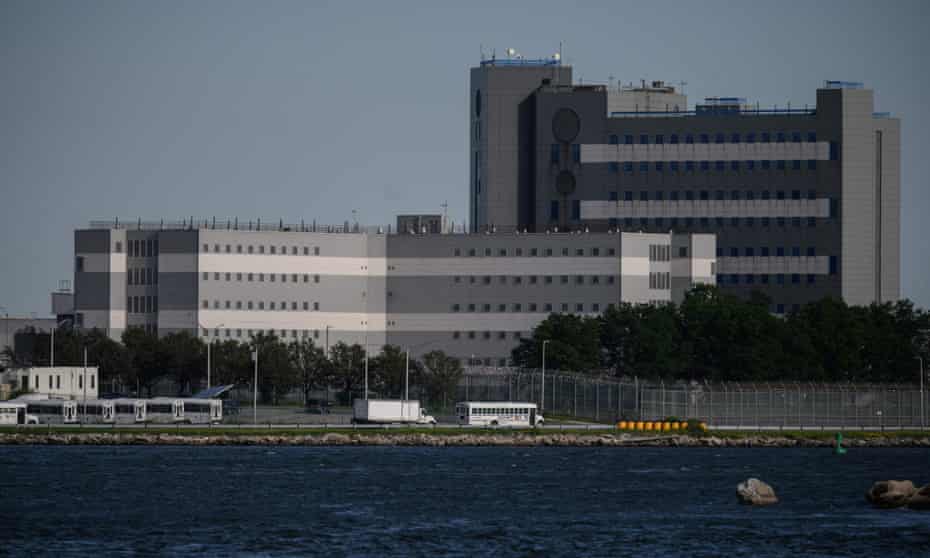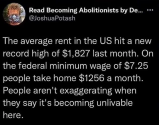You are using an out of date browser. It may not display this or other websites correctly.
You should upgrade or use an alternative browser.
You should upgrade or use an alternative browser.
American Economics Thread
- Thread starter Bernard
- Start date
Hahahaha... some US carriers may just pay lip service but not rip out their Huawei & ZTE gear, like how some US gov agencies secretly use DJI drones despite told not to.
A shortfall in funding for the US government's plan to replace Chinese telecom equipment once again highlights that any attempts to promote technological decoupling would harm the interests of the United States as well, experts said.
They were commenting on media reports that the US Federal Communications Commission said removing Chinese telecom equipment from existing telecom networks would cost $5.3 billion, much higher than what the US Congress had set aside.
Xiang Ligang, director-general of the Information Consumption Alliance, a telecom industry association in China, said inadequate financing is likely to pose connectivity challenges to people in remote areas in the US.
Products from Huawei Technologies Co and ZTE Corp are used by US telecom carriers to offer network and broadband services in some of the most remote regions in the US, Xiang said.
According to Xiang, the US government is wasting big money on replacing Chinese telecom equipment, and consumers in these areas will suffer from the lack of quality telecom services.
The FCC has already banned US telecom carriers from using Huawei and ZTE's telecom equipment via federal subsidies, citing what it alleged were national security concerns. The two Chinese companies have repeatedly denied the accusations, which they said are groundless.
In December 2020, the FCC announced rules requiring carriers that use ZTE or Huawei equipment to "rip and replace" that equipment. The plan is challenging for rural carriers which do not have enough budget to find workers to remove and replace such equipment.
Huawei said last year the "FCC initiative only creates extraordinary challenges for carriers in the most remote areas of the US to maintain the same high level and quality of service they provide to their customers without disruption".
Steve Berry, president and CEO of the Competitive Carriers Association, a trade group for about 100 wireless providers in the US, issued a statement earlier this year calling on the US government to ensure the FCC program is fully funded so that connectivity is maintained during the operators' transition to new equipment for their networks.
Bai Ming, deputy director of international market research at the Chinese Academy of International Trade and Economic Cooperation, said any attempts to promote technological decoupling would harm US interests as well, as shown by numerous instances in the past.
A shortfall in funding for the US government's plan to replace Chinese telecom equipment once again highlights that any attempts to promote technological decoupling would harm the interests of the United States as well, experts said.
They were commenting on media reports that the US Federal Communications Commission said removing Chinese telecom equipment from existing telecom networks would cost $5.3 billion, much higher than what the US Congress had set aside.
Xiang Ligang, director-general of the Information Consumption Alliance, a telecom industry association in China, said inadequate financing is likely to pose connectivity challenges to people in remote areas in the US.
Products from Huawei Technologies Co and ZTE Corp are used by US telecom carriers to offer network and broadband services in some of the most remote regions in the US, Xiang said.
According to Xiang, the US government is wasting big money on replacing Chinese telecom equipment, and consumers in these areas will suffer from the lack of quality telecom services.
The FCC has already banned US telecom carriers from using Huawei and ZTE's telecom equipment via federal subsidies, citing what it alleged were national security concerns. The two Chinese companies have repeatedly denied the accusations, which they said are groundless.
In December 2020, the FCC announced rules requiring carriers that use ZTE or Huawei equipment to "rip and replace" that equipment. The plan is challenging for rural carriers which do not have enough budget to find workers to remove and replace such equipment.
Huawei said last year the "FCC initiative only creates extraordinary challenges for carriers in the most remote areas of the US to maintain the same high level and quality of service they provide to their customers without disruption".
Steve Berry, president and CEO of the Competitive Carriers Association, a trade group for about 100 wireless providers in the US, issued a statement earlier this year calling on the US government to ensure the FCC program is fully funded so that connectivity is maintained during the operators' transition to new equipment for their networks.
Bai Ming, deputy director of international market research at the Chinese Academy of International Trade and Economic Cooperation, said any attempts to promote technological decoupling would harm US interests as well, as shown by numerous instances in the past.
Hahahaha... some US carriers may just pay lip service but not rip out their Huawei & ZTE gear, like how some US gov agencies secretly use DJI drones despite told not to.
A shortfall in funding for the US government's plan to replace Chinese telecom equipment once again highlights that any attempts to promote technological decoupling would harm the interests of the United States as well, experts said.
They were commenting on media reports that the US Federal Communications Commission said removing Chinese telecom equipment from existing telecom networks would cost $5.3 billion, much higher than what the US Congress had set aside.
Xiang Ligang, director-general of the Information Consumption Alliance, a telecom industry association in China, said inadequate financing is likely to pose connectivity challenges to people in remote areas in the US.
Products from Huawei Technologies Co and ZTE Corp are used by US telecom carriers to offer network and broadband services in some of the most remote regions in the US, Xiang said.
According to Xiang, the US government is wasting big money on replacing Chinese telecom equipment, and consumers in these areas will suffer from the lack of quality telecom services.
The FCC has already banned US telecom carriers from using Huawei and ZTE's telecom equipment via federal subsidies, citing what it alleged were national security concerns. The two Chinese companies have repeatedly denied the accusations, which they said are groundless.
In December 2020, the FCC announced rules requiring carriers that use ZTE or Huawei equipment to "rip and replace" that equipment. The plan is challenging for rural carriers which do not have enough budget to find workers to remove and replace such equipment.
Huawei said last year the "FCC initiative only creates extraordinary challenges for carriers in the most remote areas of the US to maintain the same high level and quality of service they provide to their customers without disruption".
Steve Berry, president and CEO of the Competitive Carriers Association, a trade group for about 100 wireless providers in the US, issued a statement earlier this year calling on the US government to ensure the FCC program is fully funded so that connectivity is maintained during the operators' transition to new equipment for their networks.
Bai Ming, deputy director of international market research at the Chinese Academy of International Trade and Economic Cooperation, said any attempts to promote technological decoupling would harm US interests as well, as shown by numerous instances in the past.
The US can always quietly waive the ban for US carriers while they force the ban on all their vassals.
The same as trick as the ban on Russian oil and fertilizer.
Neat trick.
Most certainly
1 week later......
Washington Post: Why there is a shortage of camping tents and how China is behind this.
US slave labor produces 11 billion of goods & services a year...

A general view shows the Rikers Island facility. Photograph: Ed Jones/AFP/Getty Images
in Los Angeles Last modified on Fri 17 Jun 2022 14.28 AEST
Incarcerated workers in the US produce at least $11bn in goods and services annually but receive just pennies an hour in wages for their prison jobs, according to a new report from the American Civil Liberties Union (ACLU).
Nearly two-thirds of all prisoners in the US, which imprisons more of its population than any other country in the world, have jobs in state and federal prisons. That figure amounts to roughly 800,000 people, researchers estimated in the report, which is based on extensive public records requests, questionnaires and interviews with incarcerated workers.
ACLU researchers say the findings outlined in Wednesday’s report raise concerns about the systemic exploitation of prisoners, who are compelled to work sometimes difficult and dangerous jobs without basic labor protections and little or no training while making close to nothing.
Advertisement
Most incarcerated workers are tasked with general prison maintenance that is crucial to keep the facilities running, according to the ACLU researchers, who worked with the University of Chicago Law School’s Global Human Rights Clinic.
“State governments and the prison system are extracting tremendous value from a captive and exploited workforce all while claiming they can’t afford to pay them a liveable wage,” said Jennifer Turner, the principal author of the report.
More than 80% of incarcerated laborers do general prison maintenance, including cleaning, cooking, repair work, laundry and other essential services. For paid non-industry jobs, workers make an average of 13 cents to 52 cents an hour, according to the report. Seven states – Alabama, Arkansas, Florida, Georgia, Mississippi, South Carolina and Texas – pay nothing for the vast majority of prison work.
Incarcerated workers who are paid often see most of their pay withheld for “taxes, room and board expenses, and court costs”, the report states.
“We are saving [the prisons] millions of dollars and getting paid pennies in return … All the jobs we are doing in prison are not really benefiting us; it is more benefitting the prison system. I work a job making $450 for a whole year,” said Latashia Millender, an inmate at a prison in Illinois, according to the report.
Public officials have acknowledged that the work of these unpaid and poorly compensated incarcerated laborers is crucial: “There’s no way we can take care of our facilities, our roads, our ditches, if we didn’t have inmate labor,” Warren Yeager, a former Gulf county, Florida, commissioner said to the Florida Times-Union.
Advertisement
Other officials have said they oppose new sentencing and parole laws that would reduce the pool of incarcerated workers, according to the report. Steven Prator, a Louisiana sheriff, said: “We need to keep some out there, that’s the ones that you can work, that pick up trash, the work release program, but guess what? Those are the ones that they are releasing … the good ones, that we use every day to wash cars, change oil in our cars, to cook in the kitchen, to do all that where we save money … well, they are gonna let them out.”
More than 75% of workers told ACLU researchers if they can’t work or decline to do so, they are subject to punishment ranging from solitary confinement to the loss of family visits to denials of sentence reductions.
Most incarcerated workers are not provided with skills and training for their work that would help them secure jobs when they are released, Turner said; 70% said they did not receive any formal job training, and 70% said they couldn’t afford essentials such as soap and phone calls with their wages.
“The United States has a long, problematic history of using incarcerated workers as a source of cheap labor and to subsidize the costs of our bloated prison system,” said Turner, a principal human rights researcher with the ACLU’s Human Rights Program.
“Incarcerated workers are stripped of even the most minimal protections against labor exploitation and abuse. They are paid pennies for their work in often unsafe working conditions even as they produce billions of dollars for states and the federal government.”
Some workers make slightly higher wages working for “state prison industries”, which are typically state-owned programs run by the corrections department to produce goods or provide services for other government agencies. That work includes manufacturing furniture, cleaning supplies and uniforms for other government workers, washing laundry for public hospitals or universities and working for call centers of the department of motor vehicles.
In 2021, more than 51,000 people held industry jobs, accounting for 6.5% of prison labor, the researchers found. Those workers are paid 30 cents to $1.30 an hour on average. In Oregon, for example, the DMV pays incarcerated workers $4 to $6 a day, while a worker outside of prison doing the same DMV job makes an average of $80 a day.
Incarcerated workers in prison industries programs generated goods and services worth $2.09bn nationally in 2021, the authors found, citing estimates from the National Correctional Industries Association, a prison industry group. The researchers estimated that the maintenance work of prisoners is worth $9bn a year, but cautioned that there was no centralized data on the value of this work and that the figure was probably an undercount and a rough estimate from earlier studies.
The authors of the report are calling for extensive changes around the use of prison labor, including ensuring that such work is voluntary and provides workers with the same wages and protections granted to other workers as well as work programs that give incarcerated workers marketable skills and training.
US prison workers produce $11bn worth of goods and services a year for pittance
New report by American Civil Liberties Union says incarcerated laborers are either poorly compensated or not at all
A general view shows the Rikers Island facility. Photograph: Ed Jones/AFP/Getty Images
in Los Angeles Last modified on Fri 17 Jun 2022 14.28 AEST
Incarcerated workers in the US produce at least $11bn in goods and services annually but receive just pennies an hour in wages for their prison jobs, according to a new report from the American Civil Liberties Union (ACLU).
Nearly two-thirds of all prisoners in the US, which imprisons more of its population than any other country in the world, have jobs in state and federal prisons. That figure amounts to roughly 800,000 people, researchers estimated in the report, which is based on extensive public records requests, questionnaires and interviews with incarcerated workers.
ACLU researchers say the findings outlined in Wednesday’s report raise concerns about the systemic exploitation of prisoners, who are compelled to work sometimes difficult and dangerous jobs without basic labor protections and little or no training while making close to nothing.
Advertisement
Most incarcerated workers are tasked with general prison maintenance that is crucial to keep the facilities running, according to the ACLU researchers, who worked with the University of Chicago Law School’s Global Human Rights Clinic.
“State governments and the prison system are extracting tremendous value from a captive and exploited workforce all while claiming they can’t afford to pay them a liveable wage,” said Jennifer Turner, the principal author of the report.
More than 80% of incarcerated laborers do general prison maintenance, including cleaning, cooking, repair work, laundry and other essential services. For paid non-industry jobs, workers make an average of 13 cents to 52 cents an hour, according to the report. Seven states – Alabama, Arkansas, Florida, Georgia, Mississippi, South Carolina and Texas – pay nothing for the vast majority of prison work.
Incarcerated workers who are paid often see most of their pay withheld for “taxes, room and board expenses, and court costs”, the report states.
“We are saving [the prisons] millions of dollars and getting paid pennies in return … All the jobs we are doing in prison are not really benefiting us; it is more benefitting the prison system. I work a job making $450 for a whole year,” said Latashia Millender, an inmate at a prison in Illinois, according to the report.
Public officials have acknowledged that the work of these unpaid and poorly compensated incarcerated laborers is crucial: “There’s no way we can take care of our facilities, our roads, our ditches, if we didn’t have inmate labor,” Warren Yeager, a former Gulf county, Florida, commissioner said to the Florida Times-Union.
Advertisement
Other officials have said they oppose new sentencing and parole laws that would reduce the pool of incarcerated workers, according to the report. Steven Prator, a Louisiana sheriff, said: “We need to keep some out there, that’s the ones that you can work, that pick up trash, the work release program, but guess what? Those are the ones that they are releasing … the good ones, that we use every day to wash cars, change oil in our cars, to cook in the kitchen, to do all that where we save money … well, they are gonna let them out.”
More than 75% of workers told ACLU researchers if they can’t work or decline to do so, they are subject to punishment ranging from solitary confinement to the loss of family visits to denials of sentence reductions.
Most incarcerated workers are not provided with skills and training for their work that would help them secure jobs when they are released, Turner said; 70% said they did not receive any formal job training, and 70% said they couldn’t afford essentials such as soap and phone calls with their wages.
“The United States has a long, problematic history of using incarcerated workers as a source of cheap labor and to subsidize the costs of our bloated prison system,” said Turner, a principal human rights researcher with the ACLU’s Human Rights Program.
“Incarcerated workers are stripped of even the most minimal protections against labor exploitation and abuse. They are paid pennies for their work in often unsafe working conditions even as they produce billions of dollars for states and the federal government.”
Some workers make slightly higher wages working for “state prison industries”, which are typically state-owned programs run by the corrections department to produce goods or provide services for other government agencies. That work includes manufacturing furniture, cleaning supplies and uniforms for other government workers, washing laundry for public hospitals or universities and working for call centers of the department of motor vehicles.
In 2021, more than 51,000 people held industry jobs, accounting for 6.5% of prison labor, the researchers found. Those workers are paid 30 cents to $1.30 an hour on average. In Oregon, for example, the DMV pays incarcerated workers $4 to $6 a day, while a worker outside of prison doing the same DMV job makes an average of $80 a day.
Incarcerated workers in prison industries programs generated goods and services worth $2.09bn nationally in 2021, the authors found, citing estimates from the National Correctional Industries Association, a prison industry group. The researchers estimated that the maintenance work of prisoners is worth $9bn a year, but cautioned that there was no centralized data on the value of this work and that the figure was probably an undercount and a rough estimate from earlier studies.
The authors of the report are calling for extensive changes around the use of prison labor, including ensuring that such work is voluntary and provides workers with the same wages and protections granted to other workers as well as work programs that give incarcerated workers marketable skills and training.
manqiangrexue
Brigadier
Heard that one before. They shouldn't be trying to fit average rental costs into the budget of those on minimal wage. Average rental costs are on the average earner to pay and minimum wage earners, the lowest legal possible in the US, should be trying to fit the cheapest rent-controlled units into their budget.



